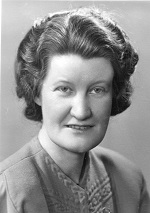 In 1944, Anna Jordahl was appointed head librarian at Concordia College. In this capacity she helped develop the plans for the Carl B. Ylvisaker library, built in 1956, which gave her the space to increase the collection size to over 100,000 volumes before her retirement in 1973. In 1944, Anna Jordahl was appointed head librarian at Concordia College. In this capacity she helped develop the plans for the Carl B. Ylvisaker library, built in 1956, which gave her the space to increase the collection size to over 100,000 volumes before her retirement in 1973.
|
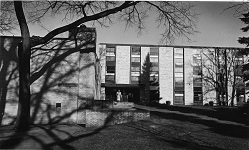 The construction of Park Region Hall in the mid-1950s as a women’s dormitory was part of Concordia’s response to increasing post-WWII student enrollment as well as the availability of government loans. From 1951 to 1955 the college’s enrollment increased by fifty-two percent, with 1354 students registered for the 1955-56 academic year. In addition to providing a new housing option for students, Park Region Hall experimented with a new form of residence governance that was eventually adopted across campus. In the twenty-first century the dormitory remains a place to test new ideas. During the 2016-2017 academic year Park Region was the first Concordia dormitory to offer a sexuality- and gender-inclusive floor. The construction of Park Region Hall in the mid-1950s as a women’s dormitory was part of Concordia’s response to increasing post-WWII student enrollment as well as the availability of government loans. From 1951 to 1955 the college’s enrollment increased by fifty-two percent, with 1354 students registered for the 1955-56 academic year. In addition to providing a new housing option for students, Park Region Hall experimented with a new form of residence governance that was eventually adopted across campus. In the twenty-first century the dormitory remains a place to test new ideas. During the 2016-2017 academic year Park Region was the first Concordia dormitory to offer a sexuality- and gender-inclusive floor.
|
 Barbara Glasrud (née Crawford), taught art history at Concordia College for over three decades. During her time at the college, she shared her enthusiasm for art and culture with many students and was instrumental in building the art program at Concordia. Barbara Glasrud (née Crawford), taught art history at Concordia College for over three decades. During her time at the college, she shared her enthusiasm for art and culture with many students and was instrumental in building the art program at Concordia.
|
 Dorothy Johnson was hired by Concordia College in 1953 as Fjelstad dormitory resident head and assistant to the dean of women. Soon after her arrival she founded the college’s Reading Service to improve students’ reading skills. She also developed an annual Conference on Reading at Concordia and became president of the Minnesota Reading Association in 1966. Dorothy Johnson was hired by Concordia College in 1953 as Fjelstad dormitory resident head and assistant to the dean of women. Soon after her arrival she founded the college’s Reading Service to improve students’ reading skills. She also developed an annual Conference on Reading at Concordia and became president of the Minnesota Reading Association in 1966.
|
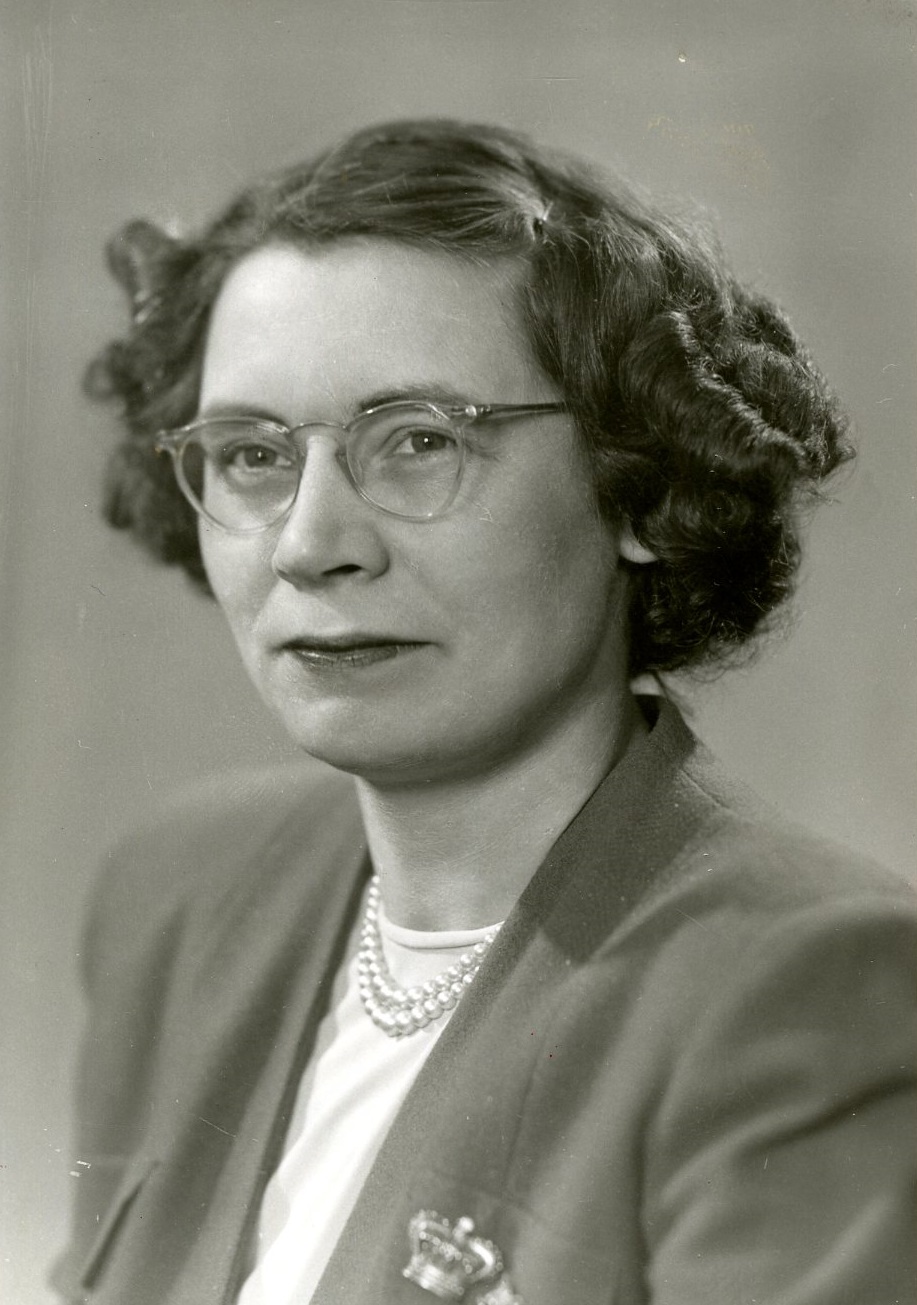 Margaret Nordlie came to Concordia first as a student and then returned to teach classes in library science and work in the library under head librarian Anna Jordahl. In collaboration with Jordahl, Nordlie facilitated the growth of library collections as well as the beginnings of the Concordia College Archives. Margaret Nordlie came to Concordia first as a student and then returned to teach classes in library science and work in the library under head librarian Anna Jordahl. In collaboration with Jordahl, Nordlie facilitated the growth of library collections as well as the beginnings of the Concordia College Archives.
|
 Vivian Wensel was a faculty member of the Concordia physical education program for thirty-five years. She taught over twenty different classes and coached the women’s badminton and golf teams. Through her work on campus and in May travel seminars abroad, she provided a positive role model for young female athletes at Concordia. Vivian Wensel was a faculty member of the Concordia physical education program for thirty-five years. She taught over twenty different classes and coached the women’s badminton and golf teams. Through her work on campus and in May travel seminars abroad, she provided a positive role model for young female athletes at Concordia.
|
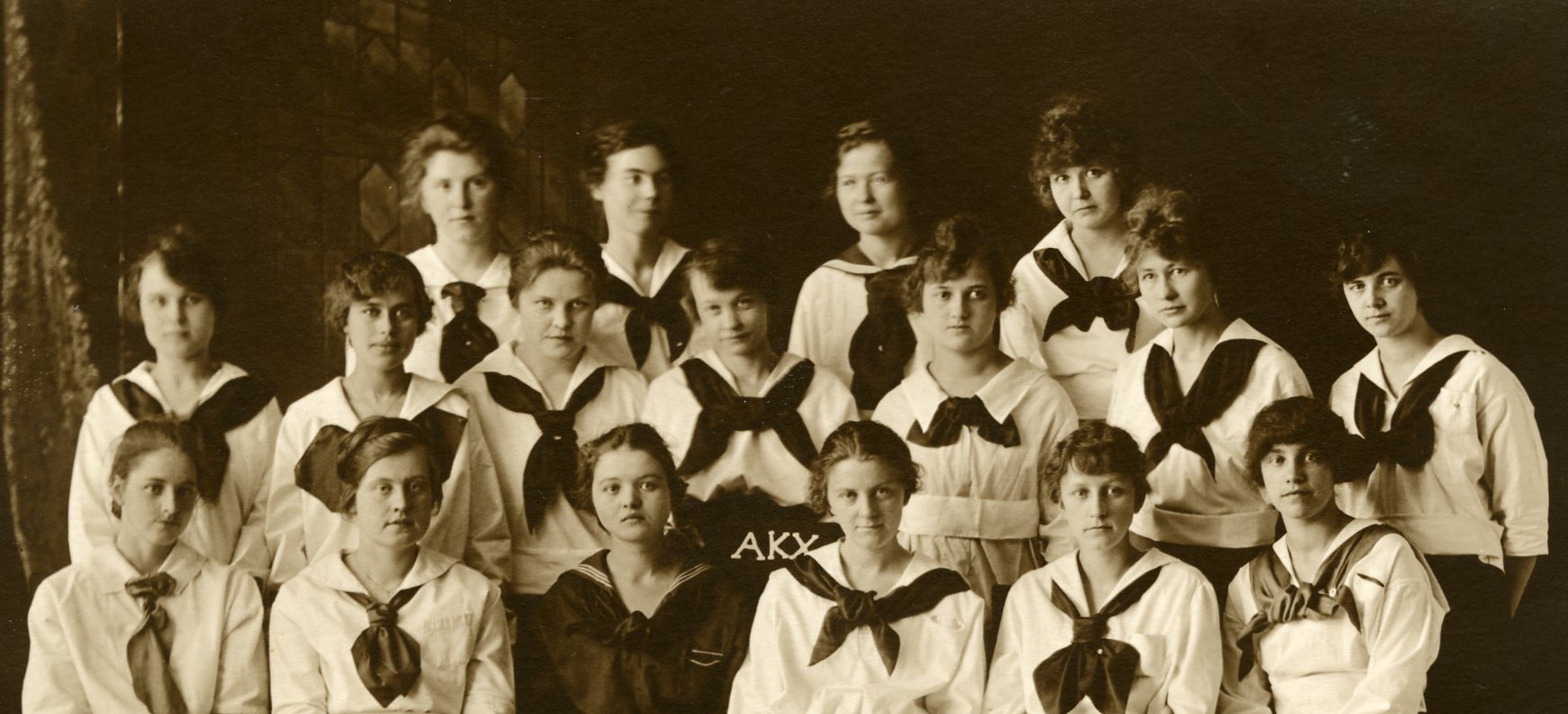 Literary societies were once a common feature at Concordia. Alpha Kappa Chi (AKX) was the first all-female literary society at the college. Even as its focus shifted from literary pursuits to social events to charitable activities, AKX provided a way for Concordia women to engage with their campus and their community for over eighty years. Phi Kappa Chi (PKX) was another major women’s society at Concordia College from 1946 to 1969. Although PKX was relatively short-lived, it provides an interesting look at some of the factors that influenced the rise and fall of women’s (and men’s) societies at Concordia. Literary societies were once a common feature at Concordia. Alpha Kappa Chi (AKX) was the first all-female literary society at the college. Even as its focus shifted from literary pursuits to social events to charitable activities, AKX provided a way for Concordia women to engage with their campus and their community for over eighty years. Phi Kappa Chi (PKX) was another major women’s society at Concordia College from 1946 to 1969. Although PKX was relatively short-lived, it provides an interesting look at some of the factors that influenced the rise and fall of women’s (and men’s) societies at Concordia.
|
 Eric Fontaine attended Concordia College during a period of dramatic racial change in higher education, matriculating in 1970 and graduating in 1974. Stepping from the nation’s capital, Fontaine asserted himself on campus through multiple extra-curricular involvements and leadership positions. He served as a guest editorialist for the student paper and as copy editor of the yearbook. In 1973, Fontaine became the first African American student in the college’s history to be elected Student Association president. Following graduation, Fontaine went on to pursue a wide-ranging career as a human resources professional, providing diversity expertise through consulting, coaching, teaching, and training in industry, government, and higher education. Eric Fontaine attended Concordia College during a period of dramatic racial change in higher education, matriculating in 1970 and graduating in 1974. Stepping from the nation’s capital, Fontaine asserted himself on campus through multiple extra-curricular involvements and leadership positions. He served as a guest editorialist for the student paper and as copy editor of the yearbook. In 1973, Fontaine became the first African American student in the college’s history to be elected Student Association president. Following graduation, Fontaine went on to pursue a wide-ranging career as a human resources professional, providing diversity expertise through consulting, coaching, teaching, and training in industry, government, and higher education.
|
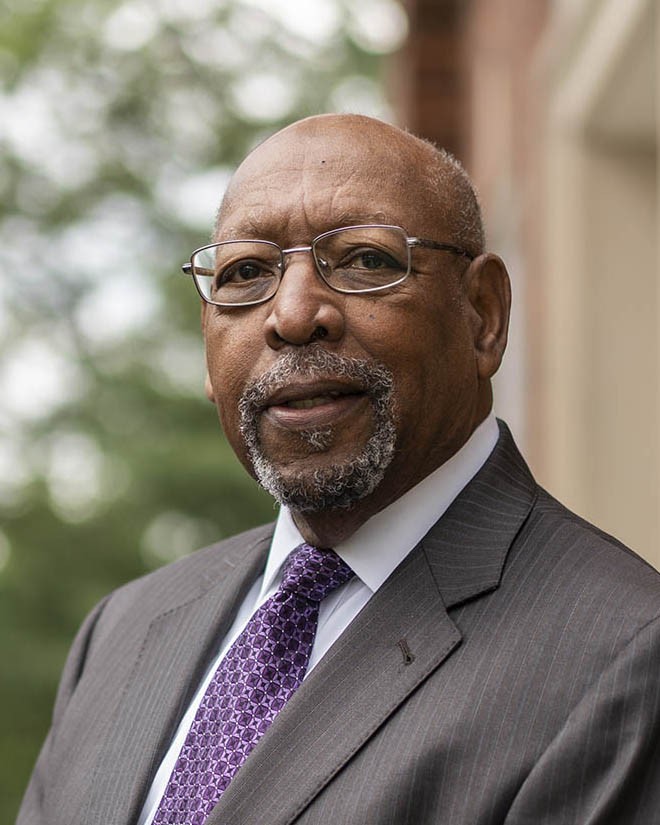 A native of Louisville, Kentucky, Richard Green attended Concordia College during the tumult and excitement of the early modern Civil Rights Movement, becoming the college’s first African American graduate in 1961. A chemistry major, Green went on to earn a master’s degree in science at North Dakota State University (1963) and his PhD in the field of inorganic chemistry at the University of Louisville (1969). In 1964, Green married Dorothy Reed and began work at a chemical firm in Louisville. Richard and Dr. Dorothy Green have two adult children, Richard Clayton and Kim Elizabeth and three grandchildren. Richard C. is a graduate of Stanford University and Kim a graduate of Northwestern University. Green returned to Concordia in 1969 as an assistant professor in the department of chemistry. He became the first director of the college’s new Office of Intercultural Affairs in 1971, helping to make Concordia a more welcoming place as Black and Native student enrollments increased under his leadership. Green served on the Board of Regents from 1972 to 1981 and aided Concordia College by acting as a mediator during the Black Student Strike of 1976. Green’s career followed numerous industry, faculty, administrative, and academic leadership posts across the nation, earning him the highest esteem as a respected and sought-out leader in higher education. A native of Louisville, Kentucky, Richard Green attended Concordia College during the tumult and excitement of the early modern Civil Rights Movement, becoming the college’s first African American graduate in 1961. A chemistry major, Green went on to earn a master’s degree in science at North Dakota State University (1963) and his PhD in the field of inorganic chemistry at the University of Louisville (1969). In 1964, Green married Dorothy Reed and began work at a chemical firm in Louisville. Richard and Dr. Dorothy Green have two adult children, Richard Clayton and Kim Elizabeth and three grandchildren. Richard C. is a graduate of Stanford University and Kim a graduate of Northwestern University. Green returned to Concordia in 1969 as an assistant professor in the department of chemistry. He became the first director of the college’s new Office of Intercultural Affairs in 1971, helping to make Concordia a more welcoming place as Black and Native student enrollments increased under his leadership. Green served on the Board of Regents from 1972 to 1981 and aided Concordia College by acting as a mediator during the Black Student Strike of 1976. Green’s career followed numerous industry, faculty, administrative, and academic leadership posts across the nation, earning him the highest esteem as a respected and sought-out leader in higher education.
|
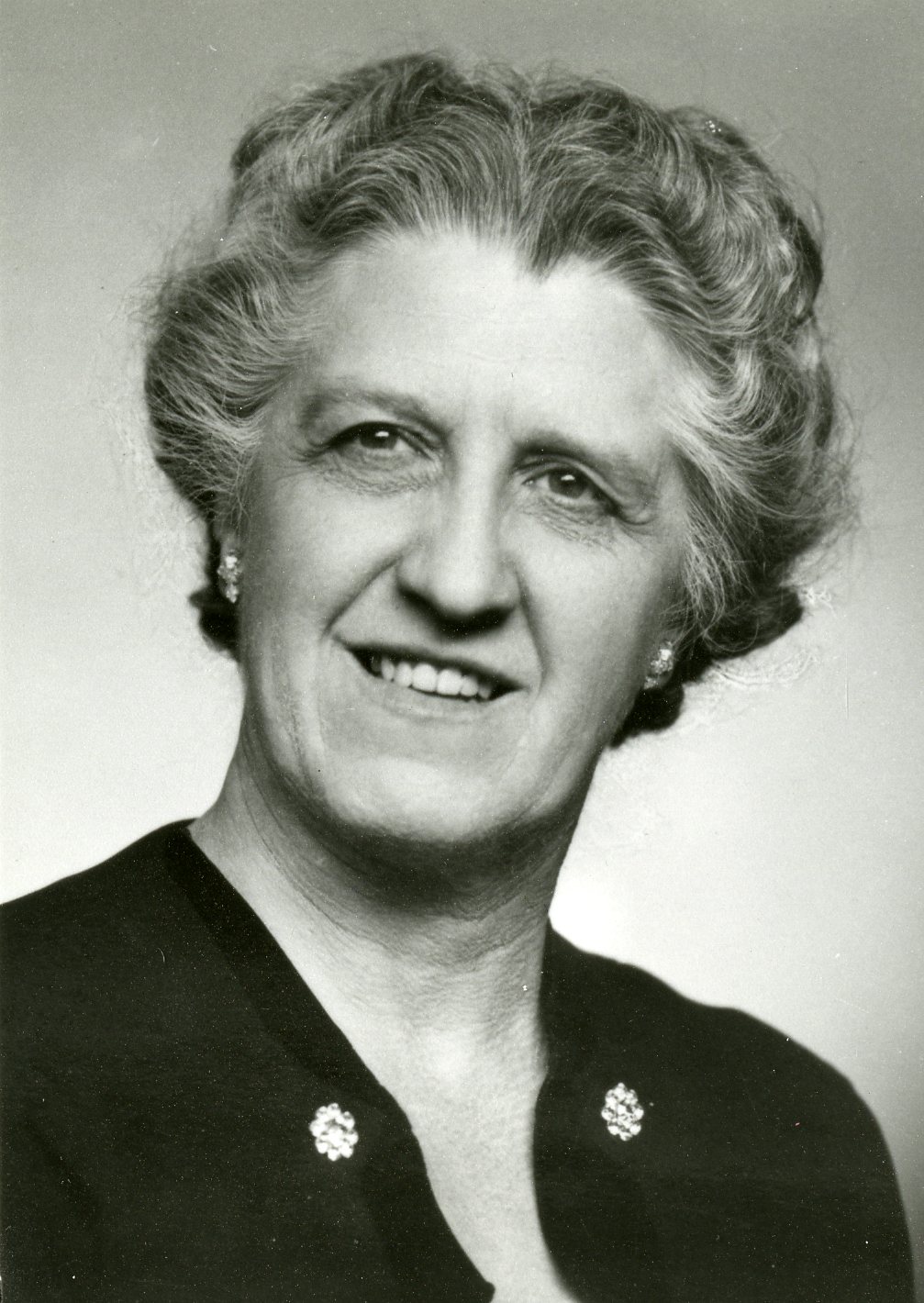 Florence Kruger served as the head of the Home Economics program for much of her thirty-year career at Concordia College. In those thirty years, she made a name for herself, as well as making a lasting impact on the lives of the students that graduated from the program. Florence Kruger served as the head of the Home Economics program for much of her thirty-year career at Concordia College. In those thirty years, she made a name for herself, as well as making a lasting impact on the lives of the students that graduated from the program.
|
 In 1944, Anna Jordahl was appointed head librarian at Concordia College. In this capacity she helped develop the plans for the Carl B. Ylvisaker library, built in 1956, which gave her the space to increase the collection size to over 100,000 volumes before her retirement in 1973.
In 1944, Anna Jordahl was appointed head librarian at Concordia College. In this capacity she helped develop the plans for the Carl B. Ylvisaker library, built in 1956, which gave her the space to increase the collection size to over 100,000 volumes before her retirement in 1973.







